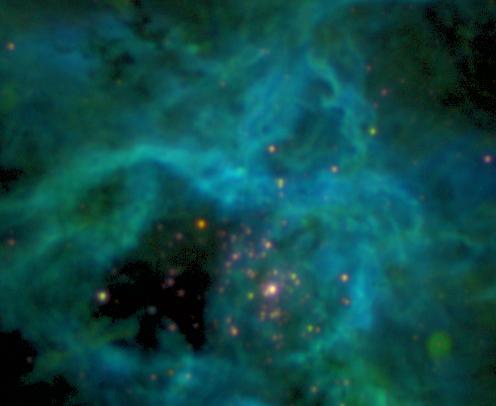![]()

|
![]()
| Date: | 22./23.3.1997 | Time: | 1:32/2:49 LT | Exposure: | OIII: 60s, Ha: 60s, SII: 60s |
|---|---|---|---|---|---|
| Field of View: | 4' x 3.3' | Receiver: | 5122 CCD | Filter: | OIII, SII, H-alpha |
| Instrument: | Dutch 0.9m | Observatory: | La Silla | Observer: | S. Kohle & T. Credner |
Astronomical Institutes of the University of Bonn
30 Doradus is a huge star-forming region in the Large Magellanic Cloud.
The emission nebula (also called Tarantula) surrounds the central star cluster NGC 2070.
The used filters are narrowband interference filters placed at
the wavelengths 501 nm, 656 nm and 672 nm and here represented
in the colors blue, green and red, respectively. The visible light
of the nebula consists mainly of line emission of the elements Oxygen
([O III], 501 nm => blue)
and Hydrogen (H alpha, 656 nm => green). The nebula emission of Sulfur
([S II], 672 nm => red) is very weak.
In contrast to this the starlight is dominated by almost evenly
distributed continuum emission. So the stars appear also in the
red channel. The different star colors are due to their different
temperatures.